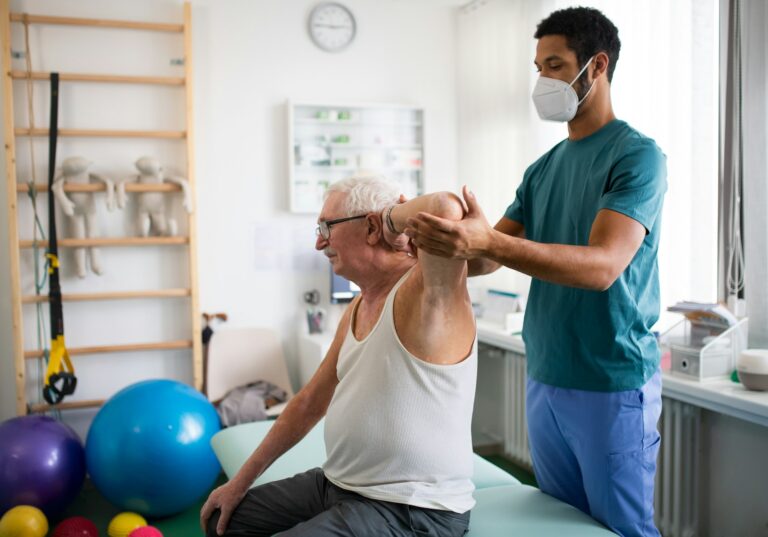Tension headaches can feel like an uninvited guest that overstays its welcome. Imagine you’re in the middle of an important meeting or simply enjoying your favorite book at home, and then comes that familiar throbbing at the temples or the dull ache wrapping around your forehead like a tight headband. It’s no surprise that many people experience this kind of discomfort—whether it’s the stress of deadlines, hours spent in front of a screen, or just the hustle and bustle of daily life. These headaches often make it difficult to focus, leaving you craving relief for headache pain more than ever.
Though tension headaches are pretty common, it doesn’t mean they have to control your day. By understanding what triggers these pesky headaches, you can take simple steps to prevent them or ease their severity. So, let’s explore what might be causing these headaches and how you can address them with a few easy techniques.
Identify the Triggers
Understanding what sets off tension headaches is like finding the missing piece of a puzzle. Knowing these triggers can help you avoid situations that lead to headaches. Here are some common triggers:
– Stress and Anxiety: When you’re stressed, your body tightens up, especially around the neck and shoulders, contributing to headache tension.
– Poor Posture: Slouching or keeping your head in one position for too long, such as when staring at a computer screen, can strain the neck and result in headaches.
– Eye Strain: Spending hours focused on a digital screen without taking breaks can lead to eye strain and headaches.
– Dehydration: Not drinking enough water during the day is another sneaky cause of headaches.
– Sleep Deprivation: Lack of a good night’s sleep disrupts your regular patterns and may invite tension headaches.
Simple changes in daily habits, like taking breaks to stretch your legs or drink water, can go a long way in mitigating these triggers. Try setting reminders to step away from your desk and give yourself a breather. Even making sure your workspace is ergonomic can make a big difference. Instead of battling through the pain, being mindful of these factors helps keep headaches at bay.
Simple Stretches and Exercises
Simple stretches and gentle exercises can make a significant difference in easing tension headaches. Often, stretching the neck and shoulders helps release tight muscles and improve blood flow. Here are a few easy steps you can try at your desk or at home:
– Neck Stretch: Sit up straight and gently tilt your head towards your shoulder until you feel a light stretch on the opposite side of your neck. Hold for 15 seconds on each side.
– Shoulder Rolls: Raise your shoulders towards your ears and then roll them back in a circular motion. Do this for about 30 seconds to release tension.
– Chin Tuck: Gently tuck your chin towards your chest without straining, holding the position for 10 seconds before returning to a neutral position. This stretch can help relieve neck stiffness.
By incorporating these simple movements into your routine, you can alleviate some of the physical strain that contributes to tension headaches.
Relaxation Techniques
Managing stress is key to preventing tension headaches, and relaxation techniques can play a big role in helping you unwind. Practices like deep breathing exercises and meditation are effective ways to calm your mind and relax your body. Here’s how you can start:
– Deep Breathing: Sit or lie down in a comfortable position. Close your eyes and take a deep breath in through your nose, allowing your belly to expand. Slowly exhale through your mouth. Repeat for a few minutes, focusing on your breath.
– Mindful Meditation: Find a quiet space and sit comfortably. Close your eyes and focus on your breathing or a positive affirmation. If your mind wanders, gently bring your focus back. Start with a few minutes each day and gradually increase the time as you feel more comfortable.
Both of these techniques help reduce stress and tension, making them excellent tools for managing headaches. A peaceful environment can also enhance relaxation, so consider creating a soothing atmosphere with soft lighting or calming music.
When to Seek Professional Help
There are times when self-care and lifestyle changes alone might not suffice in combating tension headaches. If your headaches are frequent, severe, or not improving with at-home methods, professional treatment could be necessary. Consider these signs when determining if you should reach out for professional help:
– Headaches that persist or worsen over time
– Accompanying symptoms like dizziness or vision changes
– Difficulty managing pain with over-the-counter options
Seeking expert advice offers many advantages, particularly through personalized treatments. With professional support, you might discover targeted strategies that bring more lasting relief to your tension headaches.
Finding Quick Relief in Columbus, OH
Understanding tension headaches equips you with the knowledge to take proactive steps toward relief. Small adjustments, like recognizing triggers and practicing stretches or relaxation techniques, often make a noticeable impact. And while self-care is important, don’t hesitate to seek professional guidance if headaches continue to interfere with your daily life. Addressing the issue promptly ensures you stay on top of your well-being, paving the way to a more comfortable, headache-free future.
Feeling overwhelmed by tension headaches in Columbus? It’s time to seek expert guidance for effective relief. Explore how Cornerstone Physical Therapy can help you find relief for headache pain through personalized treatments and expert support. Visit us to gain control over your headaches and enjoy a more comfortable, pain-free lifestyle.



